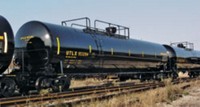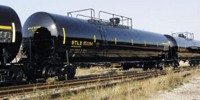Advertisement
Grab your lab coat. Let's get started
Welcome!
Welcome!
Create an account below to get 6 C&EN articles per month, receive newsletters and more - all free.
It seems this is your first time logging in online. Please enter the following information to continue.
As an ACS member you automatically get access to this site. All we need is few more details to create your reading experience.
Not you? Sign in with a different account.
Not you? Sign in with a different account.
ERROR 1
ERROR 1
ERROR 2
ERROR 2
ERROR 2
ERROR 2
ERROR 2
Password and Confirm password must match.
If you have an ACS member number, please enter it here so we can link this account to your membership. (optional)
ERROR 2
ACS values your privacy. By submitting your information, you are gaining access to C&EN and subscribing to our weekly newsletter. We use the information you provide to make your reading experience better, and we will never sell your data to third party members.
Safety
Chlorine Makers Commit To Upgrading Rail Cars
Manufacturers plan to replace their North American tank car fleets with safer, more secure cars by 2017
by Glenn Hess
November 17, 2006
Several major chlorine producers announced plans on Nov. 15 to replace their entire U.S. and Canadian railcar fleets by the end of 2017 with a new generation of tank cars that will feature multiple safety and security enhancements.
Occidental Chemical, Dow Chemical, U.S. Magnesium, and Bayer MaterialScience have established a chlorine rail tank car development coordination panel, which the companies say will work to accelerate the development of improved tank car designs that can eventually be used throughout the chemical industry.
The panel says it would welcome the participation of other chlorine shippers willing to commit to the same rail tank car replacement plans.
"Of all the aspects involved in the safe rail transport of chemicals, shippers like OxyChem can have the greatest positive impact on rail tank car design," says Stephen R. Fitzgerald, the company's senior vice president for manufacturing, engineering, and technology.
"While we believe the current rail tank car fleet is dependable, our commitment to health, safety, environment and security excellence, and continuous improvement leads us to support development of a next-generation tank car design that incorporates significant safety and security enhancements," Fitzgerald says.
The Chlorine Institute, an industry trade association, has agreed to facilitate the new panel, which will coordinate its activities with a joint-project team already established by Dow, Union Pacific Railroad, and Union Tank Car.
In August, those companies announced a multistep process for developing a next-generation rail tank car for highly hazardous chemicals that provides a five- to 10-fold improvement in safety and security performance over tank cars currently in service (C&EN Online Latest News, Aug. 9).
The initial aim of that project is to develop improved tank cars for transporting chlorine and other toxic inhalation hazards, says Henry Ward, project leader and global director of transportation safety and security for Dow. Subsequent generations of the project, he says, will address shipments of flammable gases, such as ethylene oxide, and then a group of environmentally sensitive chemicals that includes chlorinated hydrocarbons.
Frank Reiner, vice president of transportation and emergency preparedness at the Chlorine Institute, says there have been at least 1.5 million rail shipments of chlorine since record keeping began in 1965 and that only 11 tanks have been breached. But in the past four years, there have been two fatal railroad accidents that involved releases of chlorine from punctured tank cars. "It's a pretty tremendous safety record but one that obviously has to be improved when you look at these recent incidents," Reiner remarks.
A fuller discussion of the safety issues of hazmat transport will be available in the Nov. 20 issue of C&EN.




Join the conversation
Contact the reporter
Submit a Letter to the Editor for publication
Engage with us on Twitter